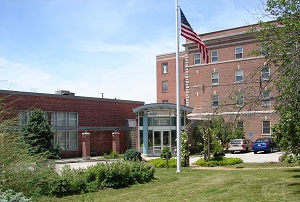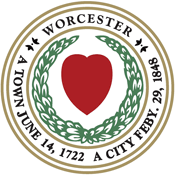Municipal Energy Savings Project - Project Steps
The City’s Municipal Energy Savings Project unfolded in several sequential steps listed below.
 A - Energy Audit of Municipal Facilities
A - Energy Audit of Municipal Facilities
In 2009, Honeywell International began the investment grade energy audit of all 171 City facilities.
B - Energy Savings Performance Contract
Following the audit and review of the proposed Energy Conservation Measures, negotiations commenced. In 2011, the City and Honeywell International signed an Energy Savings Performance Contract (aka Implementation Amendment or Work Phase I) for a $26.6 million project. Projects were selected based on cost, return on investment, and each facility’s need. The project’s scope of work was increased to include nine solar installation projects and a retrofit (conversion to LED lights) of municipal street lights and the lights in municipal parking garages (aka Work Phases II, III and IV) raising the total project cost to $80 million.
C - Implementation
Implementation of Selected Energy Conservation Measures (ECMs) was broken up into several phases:
- Phase I - Comprehensive Energy Conservation and Building Modernization Program & Two Solar Projects: Critical investments in and improvements to the City's aging buildings (some of which had not received significant upgrades since their construction in the 1950s). This included upgrades to heating and cooling systems, insulation, air-sealing, lighting fixtures, water conservation equipment, installation of sophisticated energy management control systems, and more. Two solar projects at Worcester Technical High School and Sullivan Middle School were also part of this phase.
- Phases II, III and IV - Solar and Lighting Retrofits: Nine new solar energy installations (including a solar farm on top of the former Greenwood Street landfill) and lighting retrofits to LEDs of ~14,000 streetlights and four municipal parking garages.
- Phase V - Building Lighting Efficiency Retrofits: The project includes replacing existing old fluorescent lighting with high efficiency, motion-sensored LEDs at 67 of its buildings - 48 schools, 9 fire stations and 10 municipal buildings. The project’s value is approximately $8 million, avoiding over 4 million kWh and 2,600 tonnes of carbon dioxide per year, while improving light quality for city’s students, employees and visitors.
To Learn More - Click Here
D - Measurement & Verification
Once all the Energy Conservation Measures are in place (for each work phase), Honeywell International will conduct measurements and verify the performance of the ECMs as it relates to the energy savings guarantee. The City will verify Honeywell International’s findings and compare actual energy savings against the projected savings as guaranteed in the ESPC.

